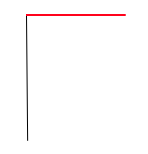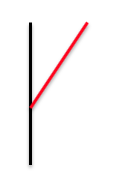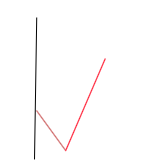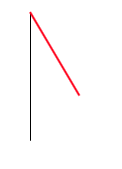Vocabulary
Dialogue Part A Vocabulary
Audio file |
|
|
|
Simplified |
Traditional |
Dàwéi |
Dawei (David) |
given name |
大为 |
大為 |
|
Gāo |
(family name) |
family name |
高 |
高 |
|
hǎo |
good |
adjectival verb |
好 |
好 |
|
ma |
(forms yes-no questions) |
final particle |
吗 |
嗎 |
|
Měilì |
Meili |
given name |
美丽 |
美麗 |
|
nǐ |
you |
pronoun |
你 |
你 |
|
nǐ hǎo |
hello (formal greeting) |
greeting |
你好 |
你好 |
|
shì |
be |
stative verb |
是 |
是 |
|
wǒ |
I, me |
pronoun |
我 |
我 |
|
xuésheng |
student |
noun |
学生 |
學生 |
|
|
yě |
also |
adverb |
也 |
也 |
Zhāng |
(family name) |
family name |
张 |
張 |
Dialogue Part B Vocabulary
Audio file |
|
|
|
Simplified |
Traditional |
bù |
no, not |
negation |
不 |
不 |
|
lǎoshī |
teacher, professor |
noun |
老师 |
老師 |
|
Lǐ |
(family name) |
family name |
李 |
李 |
|
tā |
he/him, she/her, it |
pronoun |
他, 她, 它 |
他, 她, 它 |
Dialogue Part C Vocabulary
Audio file |
|
|
|
Simplified |
Traditional |
hěn |
very |
intensifier |
很 |
很 |
|
xièxie |
thank you |
conversational expression |
谢谢 |
謝謝 |
|
zài jiàn |
goodbye |
conversational expression |
再见 |
再見 |
Dialogue
Part A
Audio file |
Dialogue |
|
Zhāng Dàwéi: Nǐ hǎo. |
张大为: 你好。 |
|
Gāo Měilì: Nǐ hǎo. |
高美丽: 你好。 |
|
Zhāng Dàwéi: Wǒ shì xuésheng. Nǐ shì xuésheng ma? |
张大为: 我是学生。你是学生吗? |
|
Gāo Měilì: Shì. Wǒ yě shì xuésheng. |
高美丽: 是。我也是学生。 |
|
Part B
Audio file |
Dialogue |
|
Zhāng Dàwéi: Tā shì xuésheng ma? |
张大为: 他是学生吗? |
|
Gāo Měilì: Bù shì. Tā bù shì xuésheng. Tā shì |
高美丽: 不是。他不是学生。他是 |
|
Part C
Audio file |
Dialogue |
|
Gāo Měilì: Lǎoshī hǎo. |
高美丽: 老师好。 |
|
Lǐ lǎoshī:Gāo Měilì, nǐ hǎo ma? |
李老师: 高美丽,你好吗? |
|
Gāo Měilì: Wǒ hěn hǎo, xièxie. |
高美丽: 我很好,谢谢。 |
|
Lǐ lǎoshī:Zài jiàn. |
李老师: 再见。 |
|
Structure Drills
1. Asking questions (Use and Structure notes 1.4, 1.5, 1.6, 1.7, 1.8. 1.9)
You will hear a statement. Ask the corresponding question, as in the example.
Example:
You will hear: Tā bù shì xuésheng.
You will say: Tā shì xuésheng ma?
Click "Response" to hear the correct response
(a) (b) (c) (d) (e) (f) (g) (h)
|
Prompt |
Response |
Example |
||
(a) |
||
(b) |
||
(c) |
||
(d) |
||
(e) |
||
(f) |
||
(g) |
||
(h) |
2. Structure drill I (Use and Structure notes 1.1, 1.3, 1.4)
You will hear a sentence in Mandarin followed by a word or phrase. Replace the subject of the sentence with this word or phrase to form a new sentence, as in the example.
Example:
You will hear: Wǒ shì xuésheng. (tā)
You will say: Tā shì xuésheng.
Click "Response" to hear the correct response
(a) (b) (c) (d) (e) (f) (g) (h) (i)
|
Prompt |
Response |
Example |
||
(a) |
||
(b) |
||
(c) |
||
(d) |
||
(e) |
||
(f) |
||
(g) |
||
(h) |
||
(i) |
3. Structure drill II (Use and Structure notes 1.1, 1.3, 1.4, 1.5)
You will hear a sentence in Mandarin followed by a word or phrase. Replace the object of the sentence with this word or phrase to form a new sentence, as in the example.
Example:
You will hear: Wǒ shì xuésheng. (lǎoshī)
You will say: Wǒ shì lǎoshī.
Click "Response" to hear the correct response
(a) (b) (c) (d) (e) (f) (g)
|
Prompt |
Response |
Example |
||
(a) |
||
(b) |
||
(c) |
||
(d) |
||
(e) |
||
(f) |
||
(g) |
4. Yes and no (Use and Structure notes 1.1, 1.6, 1.7, 1.9)
You will hear a question and a short answer. Restate the answer as a long answer, as in the example.
Example:
You will hear: Q: Tā shì xuésheng ma? A: Bù shì.
You will say: Tā bù shì xuésheng.
Click "Response" to hear the correct response
(a) (b) (c) (d) (e) (f) (g)
|
Prompt |
Response |
Example |
||
(a) |
||
(b) |
||
(c) |
||
(d) |
||
(e) |
||
(f) |
||
(g) |
5. Adding yě (也) also (Use and Structure note 1.1, 1.8)
You will hear a sentence. Restate the sentence, adding yě in its proper location.
Example:
You will hear: Tā shì lǎoshī.
You will say: Tā yě shì lǎoshī.
Click "Response" to hear the correct response
(a) (b) (c) (d) (e) (f) (g)
|
Prompt |
Response |
Example |
||
(a) |
||
(b) |
||
(c) |
||
(d) |
||
(e) |
||
(f) |
||
(g) |
Sentence Pyramids
Sentence Pyramids illustrate the use of each new vocabulary item and structure introduced in the lesson. Use them to help you to learn how to form phrases and sentences in Mandarin. Supply the English translation for the last line where indicated.
Audio file |
Vocabulary |
Translation |
hǎo |
good, well |
|
Nǐ hǎo. |
Hello. |
Audio file |
Vocabulary |
Translation |
xuésheng |
student |
|
shì xuésheng |
be a student |
|
Nǐ shì xuésheng. |
You are a student. |
Audio file |
Vocabulary |
Translation |
xuésheng |
student |
|
shì xuésheng |
be a student |
|
Wǒ shì xuésheng. |
I are a student. |
Audio file |
Vocabulary |
Translation |
shì xuésheng |
be a student |
|
Tā shì xuésheng |
He/she is a student |
Audio file |
Vocabulary |
Translation |
ma? |
yes-no question particle |
|
shì xuésheng ma? |
be a student, yes or no? |
|
Nǐ shì xuésheng ma? |
Are you a student? |
Audio file |
Vocabulary |
Translation |
shì xuésheng |
be a student |
|
yě shì xuésheng |
also be a student |
|
Wǒ yě shì xuésheng |
___________________ |
Audio file |
Vocabulary |
Translation |
shì xuésheng |
be a student |
|
bù shì xuésheng |
not be a student |
|
Tā bù shì xuésheng |
He/she is not a student |
Audio file |
Vocabulary |
Translation |
lǎoshī |
teacher |
|
shì lǎoshī |
be a teacher |
|
Tā shì lǎoshī |
__________________ |
Audio file |
Vocabulary |
Translation |
shì lǎoshī |
be a teacher |
|
shì lǎoshī ma? |
be a teacher, yes or no? |
|
Nǐ shì lǎoshī ma? |
_______________________ |
Audio file |
Vocabulary |
Translation |
ma? |
(yes-no question particle) |
|
Nǐ hǎo ma? |
Are you okay? |
Audio file |
Vocabulary |
Translation |
xièxie |
thanks, thank you |
|
Wǒ hěn hǎo, xièxie |
I am fine, thanks |
| Audio file | Vocabulary |
Translation |
lǎoshī |
teacher |
|
shì lǎoshī |
be a teacher |
|
bù shì lǎoshī |
not be a teacher |
|
Wǒ bù shì lǎoshī |
_______________ |
Audio file |
Vocabulary |
Translation |
Hǎo |
good |
|
Lǎoshī hǎo |
Hello professor |
Audio file |
Vocabulary |
Translation |
Hǎo |
good |
|
Xuésheng hǎo |
Hello students |
Audio file |
Vocabulary |
Translation |
Dàwéi |
Dawei (given name) |
|
Zhāng Dàwéi |
Zhāng Dawei (family name + given name |
|
shì Zhāng Dàwéi |
be Zhang Dawei |
|
Tā shì Zhāng Dàwéi |
________________________ |
Audio file |
Vocabulary |
Translation |
Měilì |
Meili (given name) |
|
Gāo Měilì |
Gao Meili (family name + given name) |
|
shì Gāo Měilì |
be Gao Meili |
|
shì Gāo měilì ma? |
be Gao Meili, yes or no? |
|
Nǐ shì Gāo Měilì ma? |
________________________ |
Audio file |
Vocabulary |
Translation |
Gāo Měilì |
Gao Meili |
|
Shì Gāo Měilì |
be Gao Meili |
|
Wǒ shì Gāo Měilì. |
I am Gao Meili |
|
Shì. Wǒ shì Gāo Měilì. |
Yes. I am Gao Meili |
Audio file |
Vocabulary |
Translation |
Lǎoshī |
teacher |
|
Lǐ lǎoshī |
teacher Lǐ |
|
shì Lǐ lǎoshī |
be Teacher Lǐ |
|
Tā shì Lǐ lǎoshī. |
He is Teacher Lǐ. |
Audio file |
Vocabulary |
Translation |
hǎo |
good |
|
hěn hǎo |
very good, fine, okay |
|
Tā hěn hǎo |
She is very good |
Mandarin Pronunciation
Pronunciation and Pinyin
1. Introduction to the parts of the Mandarin syllable
The Mandarin syllable can be described in terms of three parts: an initial consonant, a final, and a tone. Syllables need not begin with an initial consonant, so we put the initial consonant in parentheses here.
Tone |
|
(initial consonant) |
final |
In this lesson, we focus on the four Mandarin contour tones and on initials and finals that appear in this lesson’s Chinese vocabulary.
Tones
The four contour tones
In Mandarin, tones are a feature of pronunciation like consonants and vowels, and they serve to distinguish the meaning of a syllable. Tone involves the pitch of the syllable, and contour tones are tones in which the pitch has a particular shape, for example, level, falling, or rising, across the syllable. Mandarin has four contour tones and we look at their basic forms in this lesson. In Pinyin, contour tones are usually indicated with the following tone marks written over a vowel in the syllable: ˉˊˇˋ. Tones are sometimes indicated with the numbers 1-4 following the syllable, with 1 representing first tone, etc. Here are diagrams of the four contour tones of Mandarin, along with words in each tone that are introduced in Lesson 1. The diagrams indicate the pitch contour of each tone.
First Tone (1st Tone, level tone)
First tone starts high and remains high and level throughout the pronunciation of the syllable. It is also called a level tone. Click on the audio clip below to listen to these syllables, paying attention to the tone.
 |
Gāo |
Second tone (2nd tone, rising tone)
Second tone starts at mid-range rises throughout the pronunciation of the syllable. It is also called a rising tone. Click on the audio clip below to listen to these syllables, paying attention to the tone.
 |
xué |
Third tone (3rd Tone, falling-rising tone)
The basic form of third tone starts at medium pitch, drops to low pitch, and then rises. It is also called a falling-rising tone. Click on the audio clip below to listen to these syllables, paying attention to the tone.
 |
hǎo |
Fourth tone (4th tone, falling tone)
Fourth tone starts high and falls across the pronunciation of the syllable. It is also called a falling tone. Click on the audio clip below to listen to these syllables, paying attention to the tone.
 |
bù |
Tone distinguishes the meaning of syllables in the same way that consonants and vowels do. Two syllables with different tones mean different things, even if the consonants and vowels are identical. Here are examples:
mā |
mom |
fāng |
square |
má |
hemp |
fáng |
house |
mǎ |
horse |
fǎng |
imitate |
mà |
scold |
fàng |
put (something) down |
Rules for the placement of tone marks in Pinyin
The conventions of Pinyin spelling specify the location of the tone mark in the syllable. The tone mark is always placed over a vowel. To determine the vowel that receives the tone mark, apply the following rules in this order:
- If the syllable contains only one vowel, the tone mark occurs over that vowel. Examples: bù no, not, nǐ you, tā he, she, it.
- If the syllable contains a or e, the tone mark is placed over the a or the e. Examples: Gāo (family name), xué(sheng) student, (nǐ) hǎo hello.
- If the final is ou, the tone mark occurs over the o. Examples (from Lessons 2-4): dōu, yǒu
- Otherwise, the tone mark is placed over the last vowel in the syllable. Examples (from Lessons 2-3): shuō, guó, duì.
Tone change for the word bù (不) no, not
When bù (不) occurs before another syllable with fourth tone, it changes to second tone (rising tone). Here is the rule that summarizes this change.
bù + 4 bú + 4
bù duì bú duì
In this textbook we will always write bù (不) in its original fourth tone.
Here are two-syllable words and phrases in which the tone of bù is changed to rising tone (bú). Click on the audio clip below to listen.
bù + 4 |
bú + 4 |
|
bù duì |
bú duì |
Initial Consonants
Here is a table of Mandarin initial consonants. In this lesson, we focus on the highlighted groups of initial consonants.
b |
d |
g |
j |
zh |
z |
When consonants are recited in Mandarin (as the alphabet is recited in English in the form of the ABC’s), each group of consonants is followed by a particular “recitation” vowel. When we illustrate syllables with each consonant, the first example will be the recitation form of the consonant with its recitation vowel. Listen to the recordings and repeat each syllable aloud.
b, p, m, f
b, p, m, and f are pronounced similar to the way they are in English.
The following syllables begin with b, p, m, or f. Click on each line to listen to the syllables.
| b | bō, bā, bǐ, bù, bāo, bāng |
p |
pō, pà, pī, pǔ, pào, pàng |
m |
mō, mā, mǐ, mù, máo, máng |
f |
fō, fā, fù, fáng |
d, t, n, l
d, t, n, and l are pronounced very similar to the way they are in English. They differ primarily in that, in Mandarin, the tongue is slightly more forward than in English during the pronunciation of the sounds.
The following syllables begin with d, t, n, or l. Click on each line to listen to the syllables.
| d | dē, dǎ, dì, dú, dào, dāng |
t |
tē, tā, tì, tǔ, tāo, táng |
n |
nē, nà, nǐ, nǔ, nào |
l |
lē, lā, lí, lù, lǎo(shi) |
Finals
Here are the finals of Mandarin as they are spelled in Pinyin. The finals introduced in lesson 1 are highlighted.
Finals that begin with: |
and end with a vowel: |
and end with n: |
and end with ng: |
and end with r: |
a |
a, ai, ao |
an |
ang |
|
e |
e, ei |
en |
eng |
er |
o |
(o), ou |
|
ong |
|
i |
i, ia, iao, ie, iu/iou |
ian, in |
iang, ing, iong |
|
ü |
ü, üe |
üan, ün |
|
|
u |
u, ua, uai,ui/uei, uo |
uan, uen |
uang, ueng |
|
Here are words that include the finals introduced in lesson 1. Click on each line to listen to the syllables. Notice that the letter iis pronounced very differently when it follows a retroflex consonant like sh than when it follows other kinds of consonants. We will focus on the various pronunciations of the Pinyin letter i in lesson 5. Remember that the final ian rhymes with en and not with an.
a |
tā, bàba, māma |
|
i |
nǐ, bǐ, mǐ, yī |
|
(lǎo)shī, shì, chī, zhǐ |
||
u |
bù, mù, lù, shū |
|
ai |
zài, mǎi, wài, lái |
|
ao |
hǎo, lǎo(shī), bāo, dào |
|
xiǎo, biǎo, piào, yào |
||
ie |
yě, bié, diē, miè |
|
üe |
xué(sheng), xuě, jué, què |
|
uo |
wǒ, bó, mò, fó, tuō |
|
ang |
zhāng, bāng, páng, fàng |
|
eng |
lěng, néng, děng |
|
ian |
jiàn xiān biān miàn |
Notes on pronunciation and Pinyin spelling
i
Pronunciation
- The letter i in Pinyin represents three different vowel sounds. In this lesson we meet two of them. When i follows the initial consonants zh, ch, sh or r it is pronounced with a strong r (or er) as in the English word her or hammer. Example: lǎoshī. When i begins a syllable or follows most other consonants it is pronounced like the English sound ee in words like week and sleep. Example: nǐ you. We will learn a syllable with the third pronunciation of i in lesson 3.
Spelling
- If the final begins with i and there is no initial consonant, i is spelled as y. Example: yě also.
ü
Pronunciation
- The letter ü represents a sound that does not occur in English, a high front rounded vowel. It stands in contrast to the vowel i (pronounced ee as inweek and sleep), differing from it only in the position of the lips when the vowel is pronounced. To pronounce ü, position your mouth to say i (ee) and then without moving anything but your lips, round your lips as if to say oo as in loop. The high front rounded vowel ü also occurs in French and many other languages besides Mandarin.
Spelling
- If the final begins with ü and there is no initial consonant, ü is spelled as yu. We have not yet learned any words that illustrate this rule.
- If the final begins with ü and the initial consonant is j, q, or x, ü is written as u but it is pronounced ü. Example: xuésheng student.
uo
Pronunciation
- uo is pronounced like the syllable aw in the English words awful or saw.
Spelling
- If the final is uo and there is no initial consonant, uo is spelled as wo. Example: wǒ I/me.
- If the initial consonant is b, p, m, or f, the sound uo is spelled as o. Example: the recitation syllables bo, po, mo, fo. The letter o only occurs as a simple final following b, p, m, and f, so we place it in parentheses in the table above.
- When preceded by a consonant other than b, p, m, or f, uo is spelled uo. Example: guó.
e
Pronunciation
- The letter e occurs in eight finals and has three different pronunciations:
- e is pronounced similar to the vowel in the English word up. Example: the citation syllables de, te, ne, le, and the pronunciation of e in the final er.
- eng rhymes with the English word sung. Example: (xué)sheng student
- ei, ie, üe, en are pronounced as the vowel in the English word send. Example: yě also.
Spelling
- When e is preceded by the vowel i and i is not preceded by a consonant, ie is spelled ye. Example: yě also.
ian, üan
Pronunciation
The finals ian and üan rhyme with en and not with an.
Spelling
- When ian is not preceded by a consonant, it is spelled yan. When it is preceded by a consonant it is spelled ian. Example: j+ iàn = jiàn.
- When üan is not preceded by a consonant, it is spelled yuan. When preceded by a consonant it is spelled uan. Example: j + üǎn = juǎn.
Pronunciation Challenges
Tongue Twisters
Listen and repeat these tongue twisters until you can say them quickly three times in a row without making any errors. Practice makes perfect!
A |
||
Tongue twister |
Translation |
Audio files |
Bàba bào bǎobao. |
Dad holds the baby. |
|
B |
||
Tongue twister |
Translation |
Audio files |
Māma qí mǎ |
Mom is riding a horse |
|
mǎ màn |
The horse is slow |
|
māma mà mǎ |
Mom scolds the horse |
|